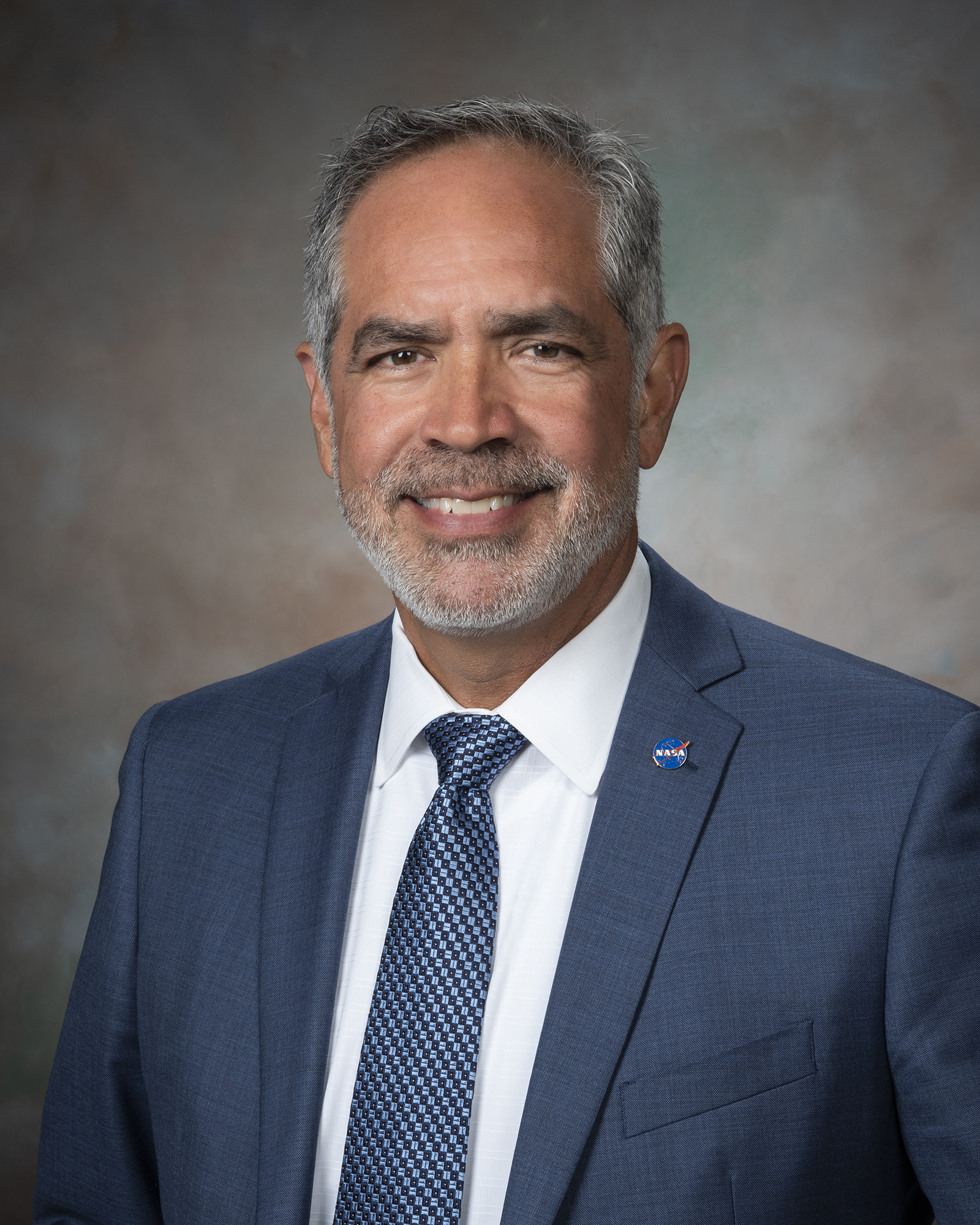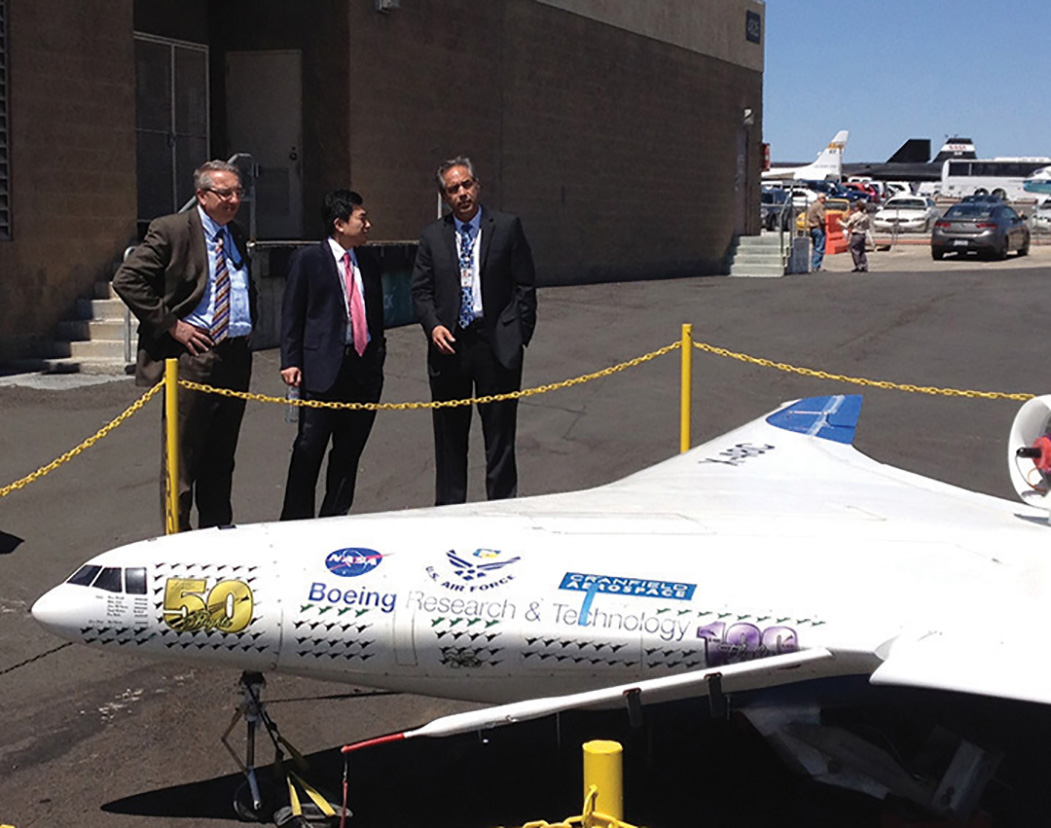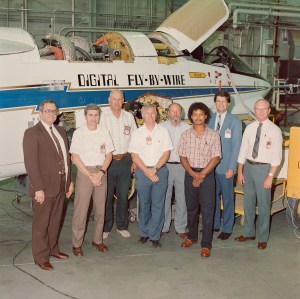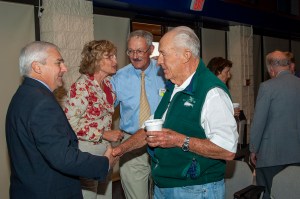Editor’s note: This column by David McBride was first published in November 2021 as part of the 75th Anniversary celebration when he was center director. McBride retired from NASA on June 30, 2022.
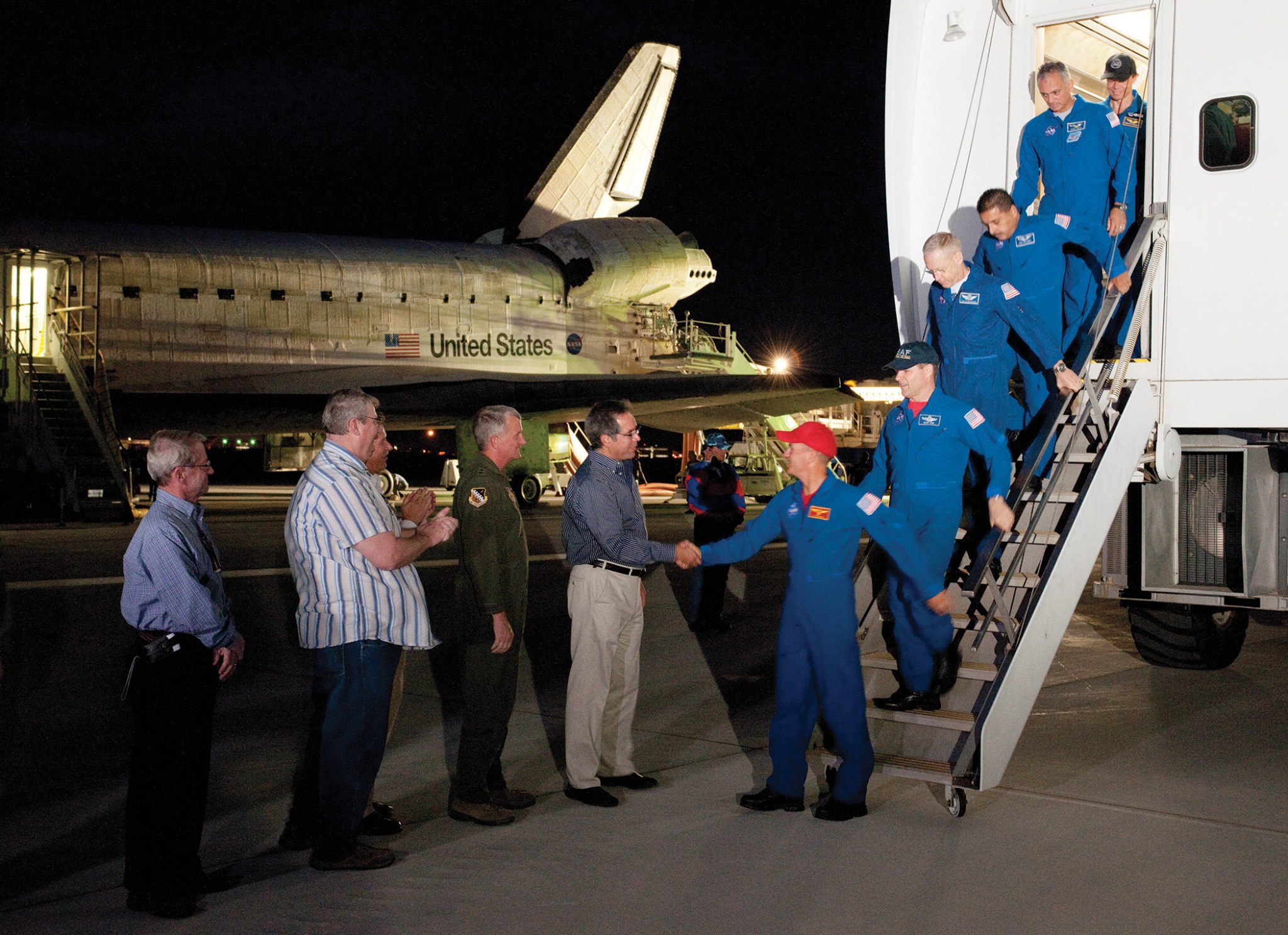
As we prepare to celebrate NASA Armstrong’s 75th anniversary, I remember what struck me when I first came to the center as a cooperative education student: the focus on mentoring the next generation, while accomplishing the extraordinary.
I grew up in the 1960s with Mercury, Gemini, and Apollo programs, and I saw Neil Armstrong walk on the Moon in black and white. Another inspiration for us in New Mexico was Harrison Schmitt, a New Mexico native, who was the first scientist astronaut and who spoke at my school. I also remember watching the X-15 movie and seeing the B-52 air launch the X-15 rocket plane.
The men and women who were here during the days when NASA was the National Advisory Committee for Aeronautics (NACA) worked on everything from the X-1 to the X-15 and created a legacy. World War II veterans and part of the greatest generation knew aircraft and flight because they learned it through hard knocks. They were the ones who mentored me and my generation.
I didn’t realize the NASA center’s vast accomplishments, but it all came together when I came here. It’s another reason I think NASA not only inspires the next generation, but also provides mentoring opportunities to show how Science, Technology, Engineering and Mathematics (STEM) education can be applied.
In fact, NASA and NASA Armstrong add value to aeronautics and industry that is passed on to every citizen in this country as we make flight safer, more reliable, economical, and an integral part of our life and culture. Whether we are traveling to see family, taking leisure trips or shipment of goods around the world, our research is a part of everyday life in an extraordinary way.
I often say people at NASA Armstrong start here on an escalator. As we get on the escalator, we learn from those above us and are ready to explore in their place as they step off the escalator. After my first student experience I returned as a student to the center twice. I then gained experience elsewhere, returned to the center again, and eventually became center director.
I worked on projects like the forward swept wing X-29 and the X-31 research vehicles and in turn mentored those who worked on the hypersonic X-43A. Now that generation is getting to the top of the escalator. They are mentoring a new generation of young engineers, pilots, mechanics, and technicians who are working on experimental aircraft projects like the X-59 Quiet SuperSonic Technology aircraft and all-electric X-57 Maxwell.
I redesigned the X-29 landing system components as one of my first assignments at NASA Armstrong. I had the freedom to work the mechanical design, the electrical changes, and implementation. This work eliminated a hazard that could have resulted in the loss of the aircraft. Everything was like that on the program, you just did it.
I also learned problems are solved one step at a time and by bringing people together from the machine shops, technicians in the calibration and instrumentation labs, avionics aircraft mechanics, and pilots. They have different perspectives on how to solve a problem.
We still do that today. I was on a call about the X-57 program when young engineers on the program were solving the technical challenges. I get a good feeling for the future when I see our young teams tackle technical problems and solve them.
When I first started as center director in 2010, I was the new kid on the block. I learned from people like former NASA Armstrong Associate Director Vince Chacon and his decision-making process and style as well as former center directors like Ken Szalai and his communication skills, Kevin Petersen and his focus on the details, and many others. I see how all areas – engineering, flight operations, budget, finance, facilities, human capital, security, public affairs, and so many other organizations work together to make the center’s achievements happen.
During my tenure, we reached a key milestone when the Stratospheric Observatory for Infrared Astronomy (SOFIA) began full operational capability and proving its ability to collect science safely. Another achievement was successfully advocating for the next generations of research flight experiments with former and current Aeronautics Research Mission Directorate leadership Jaiwon Shin and Bob Pearce, respectively.
Where I think the next focus will be is on a single-aisle commercial transport aircraft that is more efficient and will reduce carbon emissions. We flew the X-48 Blended Wing Body aircraft and advocated for that type of aircraft as one possibility. Several other designs, such as the Transonic Truss-Braced Wing transport, also can improve aircraft efficiency in the 20%, 30%, 40%, or maybe even 50% over today’s standard aircraft. That will impact everyone who flies.
One of the biggest long-term legacies that will touch more people than we understand now is electrified flight. I believe that the next generation of flight will be electrified to some degree, whether it is 100% electric like the X-57, or a hybrid design with an electric generator running electric motors that will increase aircraft efficiency and simplify aircraft maintenance, much like an electric car is now. Application of the technology and proving it works is NASA’s role.
Like digital fly-by-wire control led the way on digital control, pioneered validation testing tools, and is used on most modern aircraft in the world, I believe we will lead the way in guiding the aerospace industry forward with some standards for electric flight. That also could reduce costs to enable a whole new market in Urban Air Mobility, urban air taxi services. Transportation and the businesses needed to support those industries will have a huge impact on people’s lives and the environment.
NASA’s efforts to go back to the Moon and explore the cosmos expands our knowledge and is already enabling U.S. companies to develop new businesses for testing new technologies, resupplying the International Space Station, and providing new opportunities in space. We manage the Flight Opportunities program, which matures capabilities needed for NASA missions and commercial applications while strategically investing in the growth of the U.S. commercial spaceflight industry.
We have a role in the Orion spacecraft and the Artemis missions as well. First, in 2010 we conducted the ground Pad Abort test (an abort on the launch pad prior to launch) and then in 2019, we conducted the in-flight Ascent Abort test (an abort post launch). These tests used the Launch Abort System, which will ultimately be installed on the Orion spacecraft, to validate in those two conditions that we can safely get the crew and crew capsule to a safe distance in an emergency.
Orion and SOFIA are complex vehicle and system integration challenges that leverage our expertise in instrumentation, flight dynamics, structures, and mechanical, and we pull it all together for a successful flight experiment. Our main goal is to publish the data we gather for the benefit of the aerospace industry to then go out and develop new aircraft and industries.
For science – astrophysics and Earth science – we enable scientists to get their payloads into the atmosphere. We operate world-class Earth science and astrophysics vehicles for the agency and the world. It takes all NASA Armstrong organizations to make these vehicles successful in flight, to conduct science data from within the atmosphere safely.
Every first flight of a new technology has its own defining moment and point of validation. From the X-1 to the X-59, a first flight proves something. It’s not just the first flights. Every step along the way of completing the flight test plan extends our knowledge.
NASA Armstrong began on Sept. 30, 1946, with assisting the U.S. Army Air Corps to break the sound barrier a year later. The technology we are now validating in the X-59 will demonstrate the ability to decrease the intensity of those sonic booms first created when the X-1 succeeded.
The X-59 will provide data that could lead to the Federal Aviation Administration ending the prohibition on supersonic flight over land in the United States. Such a change could lead the way to new business opportunities and greatly reduce travel times.
Until you validate technology through flight, it is not ready for the market. A lot of people think you can design on computers, models, and simulators then you are done. We have learned that to really validate and prove something, you must take it to flight in the real world.
NASA and Armstrong are top places to work and that will continue. We are honest with each other, we are small enough so we can easily talk to each other, and we can disagree with each other and still accomplish great things.
I have every confidence in the next generation of leaders at the center, young engineers and people working in every area. They are going to do well in the future if we allow them to run and demonstrate their capabilities. We have a great team that will continue to inspire, train the next generation of professionals, and provide value to the nation.
David McBride
Center Director
NASA’s Armstrong Flight Research Center























